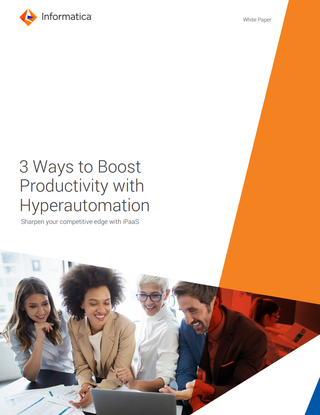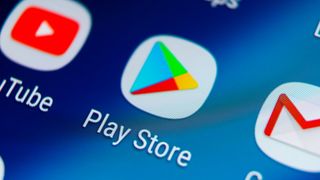How to build Android apps
Follow these eight steps to learn how to build Android apps and get them on Google Play

With there being more phones in the world than actual people, having an app for your business is a great way of reaching a wider audience. And there is no bigger audience than the Android app ecosystem which is by far the most popular in the world.
Apps were once the main method of accessing social media sites, but over time they have become an increasingly popular vehicle for all types of businesses. This has been somewhat accelerated by the pandemic which forced more and more of us into online shopping and e-commerce.
Curiously, it also forced many into new ventures; around 762,000 new businesses were created in the UK in 2020, according to data from HMRC. Furlough and people being forced out of work due to lockdown restrictions seemingly helped to create a new wave of entrepreneurs in the UK, with many people starting up a business as a way of generating new income. It's not hard to imagine that a number of these were app-based businesses.
Just to reiterate the power of business apps, mobile device use has shot up considerably over the last two years. It was reported that users spent a quarter of their daily waking hours on mobile devices during the first country-wide lockdown. And the amount of time we spend on touchscreens is only going up.
Safe to say, the opportunity for business apps is there and will be for some time to come. So now is the time to get your business, or at least your idea for one, into the Android ecosystem. Here we will go through each step you need to consider, with guides and advice to help you learn about the process of creating an Android app, which also includes the basics of the Google Play Store.
Step one: Nail down your idea

It doesn’t matter if it’s WhatsApp, TikTok, or even Deliveroo, every great app starts with a simple idea. That doesn’t mean that your app has to have the potential to go viral – you may simply want to create something to help your business be more accessible to mobile phone users.
Before you set off on this journey, you’ll need to ask yourself what issue will your app solve. It’s probably best to not waste time reinventing the wheel, or like some startups located in Silicon Valley, reinventing the public transport bus. Something that aims to reinvent is unlikely to be successful, usually because of a lack of demand. Essentially, why would customers be happy to spend money on this kind of idea, which already exists, and isn’t really any better than the original?
Get the ITPro. daily newsletter
Receive our latest news, industry updates, featured resources and more. Sign up today to receive our FREE report on AI cyber crime & security - newly updated for 2024.
Ideally, your app should be able to improve people’s quality of life in one way or another. Take a look at your own work-related or personal experiences – have you recently encountered an issue which could’ve been solved by automation? In Uber’s instance, this was something as simple as hailing a cab, while BorrowMyDoggy was started with the aim of finding a dogsitter – an issue that many pooch owners can relate to, especially since returning to the office. Both of these apps tapped into pretty lucrative markets by providing automated solutions for rather universal problems.
You could also try to improve an app which already exists by creating your own version of it, with some tweaks. Although recycling ideas is a risky business, you never know – your version might prove to be more popular than the original.
Step two: Plan your UX

Having completed the arduous task of shaping your idea, you will next need to decide how you would like it to look. It’s likely that you will have already considered some design elements as part of your functionality, but now you need to formalise those ideas into something coherent.
It’s here that you will start to really define your user experience (UX), which should be at the forefront of every decision you make going forward. To build an effective UX you will need to consider how your users are going to interact with your app’s functions, what services will be surfaced and when, and what extra features you might need to make the experience as pain-free as possible. Once you’ve considered this, you’ll have a far better idea of how your application functions in reality.
We would suggest that you use this stage to put as many ideas to paper as possible. Wireframes can be a great way to map out both the look and function of your app, especially if you take the time to detail the user journey, from turning the app on to engaging with a function.
"Consumers of all sorts are becoming more and more fickle when it comes to the UX of the app," says Rob Lauer, senior manager of developer relations at Progress, a global application development firm. "This is why I always say the first step starts with consulting with a dedicated UX designer to map out the path of the customer, nail down how you want the app to be used, and identify any problem areas before you start coding."
Step three: Create a prototype

Once you’ve figured out how you would like the application to look, and you’ve got a clear idea of its functionality, the next step is to create a working prototype.

Three ways to boost productivity with hyper-automation
Sharpen your competitive edge with iPaaS
"This could be a simple paper prototype outlining your ideas," explains Gumtree's Android app team lead, Claudia Hosu. "Or a digital one with a mock-up of your proposed app."
Feedback is perhaps the most important tool for completing this stage. Your initial ideas may have seemed solid as a concept and may have even looked doable on paper, but not every idea will work well with users in the real world.
This stage isn’t simply about making your paper plan a reality. You should spend a great deal of time tweaking the features, design, and UX of your app, as well as addressing any unexpected conflicts or broken functions. If you don’t find any issues, you’ve likely missed something.
The most valuable feedback will come from a random group of neutral testers, who will be able to provide honest reactions to your work – just be warned that everyone will be a fan.
Step four: Assemble your tools

To start developing, you'll need to download Android Studio, Google's software package for Android Devs. Available as a free cross-platform download, Android Studio includes a code editor, debugger, build automation and performance testing tools.
It's also handy to have an Android phone around to test your code on. Although you can use a virtualised device, it's more useful if you can see it running on an actual handset. In fact, Hosu recommends having two distinctly different devices, so devs can test how well their code works with different screen sizes, hardware, and OS versions.
Step five: Learn Java

Once you're ready to actually build your app, you'll need to be familiar with Java, which is the official programming language for Android. If you've already got experience with other languages, there are tools you can use to repurpose other forms of code to work with Android, but Java is the language that Google recommends.
"Java has the benefit of being around forever, static-typed, object-oriented, and is relatively easy to learn for modern developers," Lauer says. "Since Java has a lengthy history, it's very easy to find code samples online and assistance with solving problems via free online services like Stack Overflow."
There are tons of resources for new devs online as well, such as the excellent Codecademy, which offers free online courses in numerous different programming languages - including Java. It even lets you undertake practical projects, like building games and creating websites.
Step six: Start building

If you're a first-time developer, building your first app may seem like a daunting task - but thankfully Google has a raft of documentation, guides and tutorials to help novice developers through the process.
Step-by-step guides take you through everything from basic functions, all the way to incorporating animated graphics, calling APIs, and building cloud-connected applications.
"In terms of the actual code to write', I'm not sure what to say," Lauer says. "Write good code' is obvious, but individual styles dictate the actual code being written. I can say that there is a vast ecosystem of extensions you can add to an Android app. One of the more popular hubs of Android "plugins" is android-arsenal.com, which provides countless opportunities to extend and expand your native Android app."
Step seven: Release and testing

Releasing your finished app into the wild is actually fairly easy. Deploying an app to the public via the Google Play store is a straightforward process, and it also includes built-in monetisation tools. However, that's not the end of the story - you need to make sure that you continue to test and refine your app.

Three key steps to modernising legacy applications in the cloud
The challenges and ways to achieve application modernisation success
Feedback from the first set-up users that download your app from the Google Play store is going to be critical in working out how your app is performing, and how well users are responding to it.
"This testing process is essential," says Dan Drummond, Android consultant at mobile app development firm Apadmi. "Bugs and errors in apps are a surefire way to ensure that the app is deleted and replaced with something else that does work as the user is expecting. Our own research found that 61% of people would stop using an app if it was slow and unresponsive, and 26% would think less of a company if the app was poorly designed."
Step eight: Start again

Assuming your app isn't just a one-off, this marks the point at which you should be starting the development cycle all over again. Whether you're building an entirely new app or merely adding new features to your original one, you should take the user feedback and insights you've gathered over the course of building, testing and releasing the previous version and use it to inform the design of the next iteration.
This cyclical approach to development ensures that you're always learning from your previous mistakes, as well as keeping on top of your user's expectations.
Dale Walker is the Managing Editor of ITPro, and its sibling sites CloudPro and ChannelPro. Dale has a keen interest in IT regulations, data protection, and cyber security. He spent a number of years reporting for ITPro from numerous domestic and international events, including IBM, Red Hat, Google, and has been a regular reporter for Microsoft's various yearly showcases, including Ignite.





